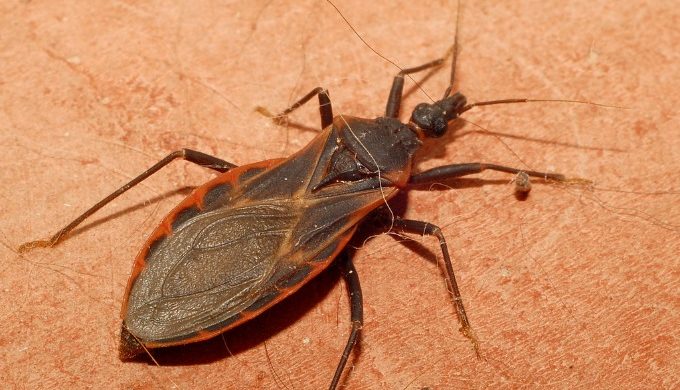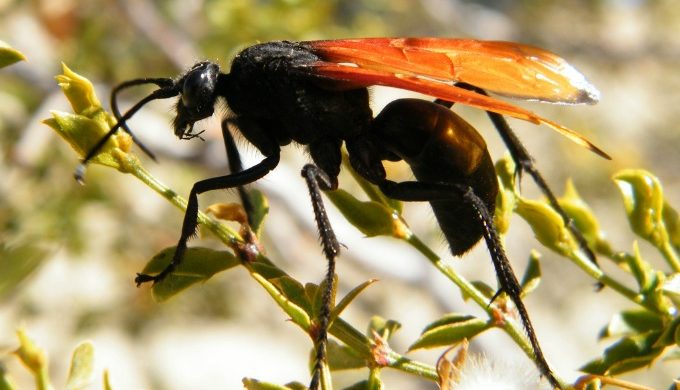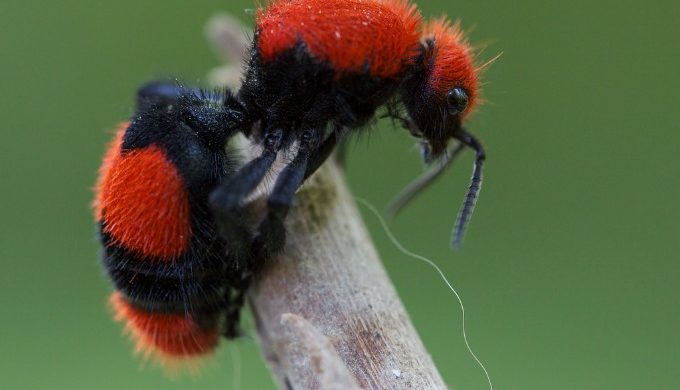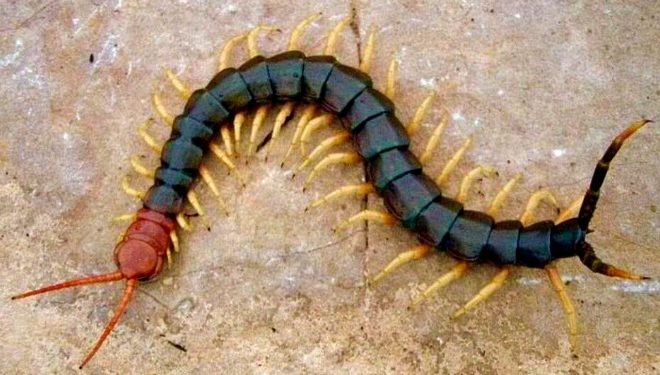Folks flock to the Texas Hill Country to partake in our crystal-clear, perennially cool waters and thriving live music scene. However, what you might not know is that lurking among these unsuspecting tourists are several bugs that can make your Hill Country vacation very memorable indeed (but perhaps not quite the memories you were hoping to make). So, grab your Benadryl and let’s explore six gnarly bugs that can really put the sting in your Hill Country vacation. So make sure to keep an eye out for these critters and avoid them, to be sure that you make your Hill Country vacation very memorable for the right reasons.
Nature
Six Gnarly Bugs You Do NOT Want To Mess With In the Texas Hill Country
1. Kissing Bugs

Photo: Flickr/Glenn Seplak
Known also as the conenose bug or bloodsucker, kissing bugs feed on the blood of animals and humans and can cause Chagas disease. Chagas disease can go largely unnoticed in humans until it morphs into a chronic condition. Then, symptoms of Chagas disease can be life-threatening and include cardiac and intestinal complications. If your dog is bitten by a kissing bug, the prognosis is quite grave because treatment options are not readily available. If you happen to find a kissing bug, Texas A&M wants to know about it. Go here for information on how to collect the specimen and contact the university.
2. Scorpions

Photo: Flickr/Douglas Mills
While not typically life-threatening, being stung by a bark scorpion will certainly leave you with bragging rights, as well as a life-long disdain for this arachnid (Yes, scorpions have eight legs…you can take our word for it, though). The Texas bark scorpion is often nocturnal and likes to hide in dark places, like inside shoes. They sting with a stinger on the end of their tail and, while the sting is about as painful as a wasp sting, it can cause redness and swelling, and some folks have been known to have allergic reactions requiring medical care. Insider tip: Take a blacklight outside in the Hill Country after dark and look for the glowing bodies of these creepy crawlers under rocks.
3. Red Headed Centipede

Photo: Facebook/Predators Reptile Center
This critter wins the award for “Most Likely To Give You Nightmares.” This 23-legged centipede, which can grow to over eight inches long, feeds on small vertebrates and is venomous. It injects a neurotoxin into its prey, and its bites have been described by humans as being quite painful and resulting in nausea, headaches and even skin necrosis.
4. Tarantula Hawk

Photo: Flickr/Brian Van de Wetering
You thought tarantulas were scary? Well, the truth is that tarantulas pose little risk to humans; however, this arachnid’s fiercest enemy can cause a sting that will bring a grown man to his knees! The 2” long tarantula hawk preys on the bodies of tarantulas. A member of the wasp family, the female tarantula hawk stings the tarantula until it’s rendered paralyzed and then lays her eggs on the body. Over the course of several weeks, the larvae eat the tarantula alive. Occasionally, a human will get in the way of a mama tarantula hawk and her nefarious work and become the victim of a sting. The sting is said to hurt worse than most any other insect on the planet.
5. Red Velvet Ant (“Cow Killer”)

Photo: Flickr/Alex Murry
The sight of a red velvet ant will stop you in your tracks for sure, with their bright red bodies that seem to scream, “DANGER!” However, these insects aren’t actually ants at all. The red velvet ant is a member of the wasp family, but because the females are wingless, they’re often mistaken for ants. Best known for having a painful sting–hence the name, “Cow Killer” (even though no reported deaths to bovines were found), the red velvet ant is a Hill Country bug that you want to give a wide berth.
6. Asp

Photo: Facebook/Onestop Petshop
It might look cute and cuddly, but you’ll certainly regret giving this guy a snuggle. The asp, also called the puss moth caterpillar, delivers a painful sting via the venomous hairs that cover its body. It’s considered the most venomous caterpillar in the United States. In 1921, schools in San Antonio had to shut down because of an overabundance of these fuzzy hellions so near curious school children.
No matter what sort of creatures you encounter while visiting the Texas Hill Country, it’s best to leave them alone. Nothing takes the fun out of a vacation faster than a sting and a visit to an urgent care clinic. Packing along a first aid kit never hurts either, when exploring the beautiful terrain of the Hill Country and all of the critters that call it home.


